Badzine asks female sports writer, Jan Lin, for her perspective on the BWF’s new skirt rule.
By Jan Lin. Photos: Badmintonphoto
Recently, I met up with a good old friend in badminton who shared with me her distress upon learning of the mandatory policy to wear skirts at competitions.
“But I’ve never worn a skirt in my entire playing career!” she said with a mixture of horror and sadness in her voice. And she asked what I thought.
“It’s a Catch 22. Good idea, poor implementation, and, women won’t listen anyway,” I contend.
So it sounds like the policy makers of this sporting body have doubled up as fashion police. It is safe to say, after working in the sports fraternity for half a decade now, that policy makers in sports are predominantly male. So I’m just mildly amused, by the context of it all rather than the policy per se. As credit to them, it is of the good intention to improve the aesthetic and commercial appeal of the sport.
But it is a hit-and-miss at best. If history is to be learnt from, then the 1960s women’s liberation movements offer many valuable learning points. This is not to say that there is no way to dictate the preferred attire for women in sport but if branding and commercial development of the sport is a concern, then policy makers have got to take a more artful approach in attaining the desired outcome of this ‘dress-up’ policy.
It starts with understanding how women work. There is a common fallacy that women dress up for the primary motivation of attracting the bees and butterflies. Not true. A woman just wants to look good, whatever her definition of ‘good’ is, and whenever she comes around to realising that looking ‘good’ is often directly proportional to positive self-esteem. Women are also creatures of envy and many are slaves to fashion trends à la the ‘if she has it, I want it too’ syndrome.
The way I see it, if badminton brands are not going to up their fashion game, for one, along with this new contentious policy in place, the sport stands to lose girls and women picking up the sport if the sport continues to (unintentionally) brand itself as an oppressive “Victorian” sport to women. Already, this new policy is in itself insinuating that female shuttlers’ lack of dress sense is faulted for the sport’s lack of commercial appeal. Really?
I remember as a young girl, badminton caught my attention ahead of tennis because I saw on TV in the 1990s the colourful-patterned badminton shirts vis-à-vis tennis’s boring plain jane all-white. Add that to the grace of the indoor sport, I thought to myself, ‘Wow I want to play it too. Badminton looks so pretty.’
What changed? Well, women didn’t. I have had a few occasions after interviewing female shuttlers, and they asked me for an off-the-record honest opinion on what I thought of their attire that day. If I were to say something non-flattering, you can be assured that you would never see that attire on court ever again.
My point here is that policy makers should know that women in sport do care about their image if that’s what the concern is. But the lack of fashion competitiveness in the major brands involved in badminton is a hindrance. Let’s not point fingers here, but let’s just say a policy on players only scratches the surface. Women are far less in control of fashion than fashion is in control of them.
I was at a press conference a few years back when tennis icon Maria Sharapova was asked, if she had to choose, would she want to be known as a top tennis player or a fashion icon?
“Well what do you think!?” she replied in exasperation. That is not to say she disregards her taste in fashion but to harp on it would be doing herself a disservice. We have to remember that a ‘fashion icon’ label is determined by the media and the public. It is an acknowledgment. It is futile to want it and impossible to dictate top-down because fashion is really about self-expression.
It’s for policy makers to create an environment that encourages it just as how the glitz and glamour of tennis awakened the fashion beast in many of its women (and men) on tour. It is not about turning badminton courts into fashion runways, but look, no one shows up at a wedding banquet in slippers, nor will anyone suit up for a beach party.
We have to ask if this ‘dress up’ policy takes the sport one step forward, two steps backwards? And worse, does such a policy risk contravening a person’s rights, of fitting one into gender stereotypes and insofar, challenge gender orientations? (Actually, if the policy makers had looked up the fashion dictionary, androgynous fashion is a current growing fad.)
What is, however, heartening in this whole episode is that perhaps, finally, there are policy makers in this sport who care about improving the sport’s image, just lacking in perspectives. (But hey, that can be trained.)
Just as women may say of men’s fashion, well, not all men look good in suits or ‘polo’ shirts. Some men are just made for the simple round-neck tee-shirts or sleeveless tops for their delicious oversized muscles. I’m all for ‘if you have it, flaunt it’. And let’s not even get started on how David Beckham breathed life into metrosexuality. In the end, to each his or her own, it’s about appreciating individuality, the person within.
And what about conservative religious groups? This policy excludes the possibility of a huge population of women succeeding in the sport, or at least, that’s where the policy is heading the sport towards. Homogeneity is the death of fashion, or aesthetics for that matter, and is often an exclusive order. As a member of the media, I digress. Give me colour, give me vavavoom personalities, give me that little bit of different.
Skirts have no stories.
Take Badzine’s poll on this issue HERE
For more on the new skirt policy, CLICK HERE
For the official BWF statement on the new regulation, CLICK HERE
![GUEST EDITORIAL – Undressing the big badminton dress-up Badzine asks female sports writer, Jan Lin, for her perspective on the BWF’s new skirt rule. By Jan Lin. Photos: Badmintonphoto Recently, I met up with a good old friend […]](http://www.badzine.net/wp-content/uploads/ngg_featured/podium-womens-doubles-12-div-yn-allengland2010.jpg)
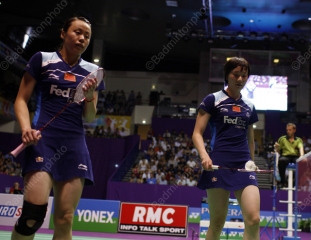
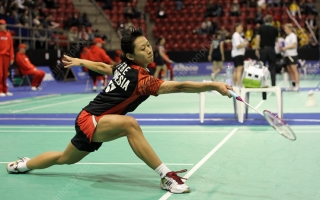


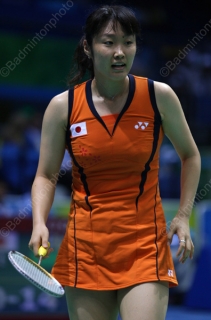


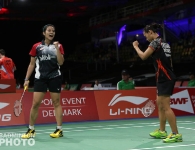


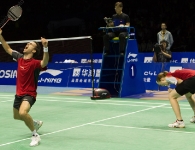
Leave a Reply